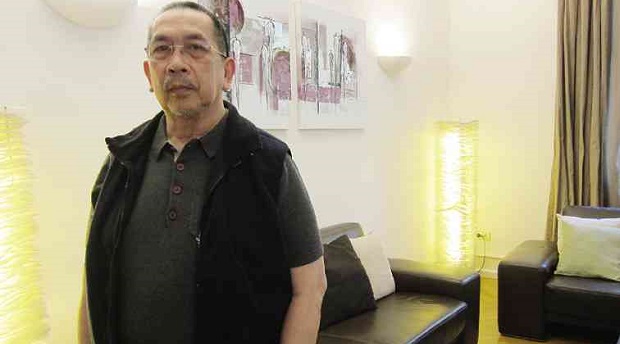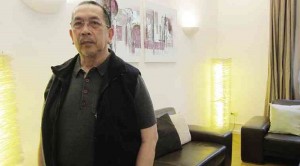
At about this time last year, Emil Sison was hobbling around with the aid of a cane. His speech was so slurred that he was embarrassed to speak to people.
When he had to pay for something, he’d feel the storekeeper’s exasperation as his shaky hands struggled to grip the bills from his wallet.
Sison, 66, was diagnosed with Parkinson’s disease two years ago, a new blow for the retired Davao construction company owner who had already suffered from two heart attacks prior.
This time, Sison’s new condition had symptoms so enfeebling that they threatened his quality of life, unacceptable for a man who refuses to slow down and resign himself to his bed as he awaits his end.
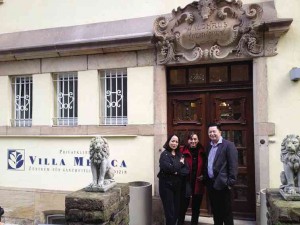
When we met him last month at the Villa Medica hospital in Edenkoben, Germany, a quiet little town surrounded by forests and vineyards an hour-and-a-half-long drive from Frankfurt, it was hard to imagine the robust man as he described himself from the year before, when he first received fresh-cell therapy (FCT). He came down from his room sans walking stick, his speech was clear, and he showed us that only two of his fingers remained slightly shaky.
“I talked to another patient today, and he noted that it was my second time here,” he said. “And I said, I wouldn’t be here again if it’s not good… Last year, I thought tama na, malayo at mahal, kaya na. But when I felt new symptoms of the same disease, I thought, delikado. Ayokong maging bedridden. Ayokong maghintay na lang ng katapusan. (That’s enough, I thought. The treatment is far and expensive… But I didn’t want to be bedridden and just wait for my end.)”
Like many Filipinos who may have heard of this unorthodox alternative treatment in Germany, Sison had doubts about FCT’s efficacy, even as he had agreed to travel across the world and pay good money for the treatment.
Preventive, regenerative
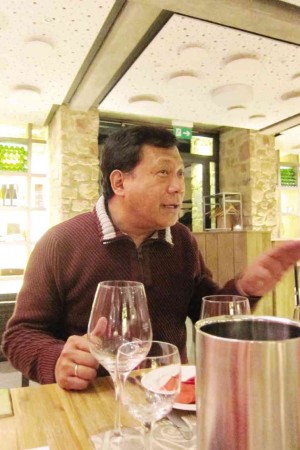
FCT is an alternative, preventive and regenerative medicine that entails the injection of fresh cells derived from the fetus of a lamb into the patient. It was developed by a Swiss surgeon named Paul Niehans in 1931; its claim is that FCT prompts the immune system to activate the body’s own healing and regenerative abilities.
FCT is based on 16th-century physician Paracelsus’ theory that “like cures like,” meaning the cells of the same organ heals it—heart cells heal the heart, skin cells heal the skin—ergo, in simple terms, specific organ cells from the lamb fetus are injected into the patient to treat specific ailments, within hours of harvesting. Villa Medica’s founder, Dr. Alexander Gali, was a student of Dr. Niehans.
(Other FCT sources may also be cattle, horse and pig, though Villa Medica uses only fresh cells from sheep because “they’re the cleanest and are sturdy, healthy animals and are usually resistant to disease,” said Dr. Ingeborg Ewen, a Villa Medica physician.)
FCT is not the same as stem-cell therapy, although they’re both cell-based therapies, explained Dr. Andre Morato, a German- and Russian-educated Filipino physician in Villa Medica.
Dr. Morato said cell-based therapies fall under two groups, and stem-cell therapy belongs to the allogenic group, with cells derived from human embryo or human non-embryo, like bone marrow, umbilical cord, fat or mesenchymal material (bone, tendon, ligament).
“If the cells derived come from the same person, then we use the term autologous. And this is what is popularly offered in the Philippines,” Dr. Morato noted.
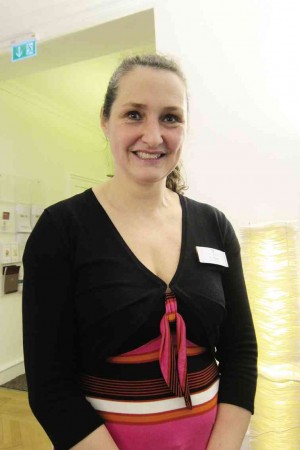
The second classification is called xenogenic therapy, under which FCT falls. The materials derived are from another species.
“Fresh cells are taken from the fetus of the lamb,” Dr. Morato explained. “The organs taken from the fetus show more advantages in comparison to any material taken from an adult animal or embryo: it has high therapeutic potential; fast differentiation of cells; high adaptability; fast division of cells; very insignificant immunogenicity; high survival rate; and is numerous in quantity.”
He added, “FCT is an organ-specific therapy and not species-specific.”
“Stem cell is a very sexy term,” said Dr. Geoffrey Huertgen, Villa Medica’s medical director. “But what they’re using is not purely stem cell but old tissue,” he noted in explaining the process of autologous stem cell, in which tissue samples are taken from the patient, cultured, then injected into the same patient. In FCT, “healthy cells from sheep fetus come into the body to start the self-healing process. You plant a seed to help the body’s own healing process. It’s an immune-stimulative therapy.”
FCT is used to treat or prevent varied conditions such as mental and neurological disorders; hormone imbalance; autism and ADHD; inborn maturation and developmental disorders; infertility and impotence; aging processes; joint problems and diseases associated with locomotion; gene defects; autoimmune diseases; low immunity; skin diseases and allergies; and disorders of the circulatory, respiratory and digestive systems.
Long tradition
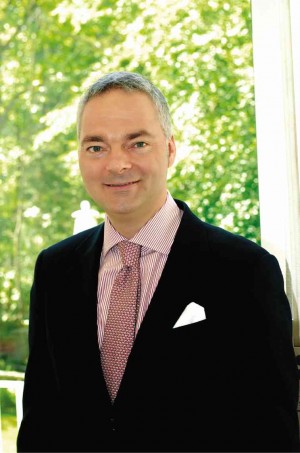
“There is a special law governing all facets of fresh-cell therapy,” Dr. Morato said. “Without German government backing it, it is not possible to practice this kind of therapy. There were moves done by so-called opponents and non-adherents of this kind of alternative therapy, which dominated Germany during the early 1990s. In the end, the result of all these discussions proved to be in favor of FCT.
“Germany has a very long tradition of recognizing many forms of alternative medicine, which are never heard of in other places,” he said. In fact, he added, naturopathic medicine has become part of the medical curriculum there.
In Germany, license to administer FCT is given to the clinic or hospital, not individual doctors, said Dr. Morato, who has been performing FCT since 2006.
Last December, he spoke before Filipino surgeons at a conference in Manila to explain FCT, in an effort to give light to this oft-maligned alternative therapy offered by Villa Medica. He characterized the experience as “not easy,” given the already many misconceptions about FCT. But it needed to be done, if only to disseminate information.
Bobby Chia, the Thai managing director of Villa Medica who took over the German clinic five years ago when then-owner and medical director Dr. Burkhard Aschhoff retired, couldn’t hide his frustration at what he felt was the rabid smear campaign of several entities in the Philippines to discredit and malign FCT and Villa Medica.
Asians now make up 70 percent of Villa Medica’s patients. The Philippines is the largest source of patients. Of the clinic’s 1,000 or so patients last year alone, 300 came from the country.
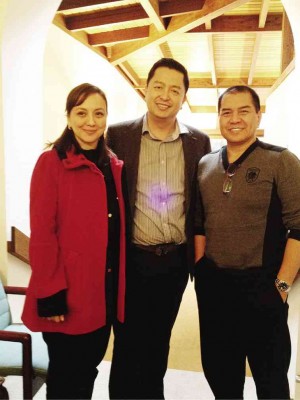
“No one has died!” Chia, 46, said emphatically responding to rumors that there have been Filipino patients who had died after undergoing FCT. “You can check records in the Philippines, they can show you nothing because it’s not true.” He also underscored Villa Medica’s strict adherence to Germany’s medical standards and denied rumors that treatment is performed in a hotel room.
Hospital, not hotel
“We’re the only German clinic doing this. Others do it in a hotel, where there’s no hygiene standards and no insurance.” Chia is apparently dissociating Villa Medica from another doctor performing FCT in a hotel in Edenkoben, a breakaway practice, from which stems some of the disparaging rumors.
Villa Medica prides itself in being a fully equipped hospital, with plush guest rooms akin to a hotel. Doctors and nurses are available onsite 24/7.
“It’s very, very important to do FCT in a hospital setup,” stressed Dr. Huertgen. “Don’t do it in a hotel. We’re injecting cells that are active for a few days and, in theory, something can happen. Doctors and nurses visit you every five to 10 minutes. If it’s just a ‘clinic,’ it opens in the morning and closes in the afternoon.”
In the Philippines, a Villa Medica-accredited physician is available for patient care and consultation post-treatment.
Patient Sison said he’s naturally skeptical about medical wonder claims. “But I wanted to go because if I don’t and this progresses, next year baka naka-walker na ako, another year baka naka-wheelchair, one more year bedridden. Doctors back home advised me to go slow. I can’t. I’ll be 70 soon. I don’t want to lose my ability to live.”
Within 20 minutes after his first FCT injection, Sison surprised even himself as for the first time in a long time, he stood up from his bed and walked to the bathroom without his cane.
In the last year, he found himself more energetic. “No more palpitations,” he said. “No more tremors, except for two fingers. I move faster. I’ve regained my balance and speech. My back pain, the sciatica nerve pain, was gone.”
He was back for the second time hoping to target new symptoms that have surfaced, “mental” symptoms as he calls them: claustrophobia and paranoia, classic signs of Parkinson’s that made long-haul air travel a challenge for him and his daughter, who accompanied him on his second trip.
He experienced no side effects of the FCT, Sison said, but he felt that one treatment wasn’t enough for his condition. “Kulang. I’m here to try the other parts of the menu.”
Efficacy
Efficacy of the FCT varies for every patient. Some feel the regenerative effects for as long as two years; others may see the benefits decline after six months, according to Dr. Huertgen. In other words, the new cells die, and the patient may need to return for another session.
“The medical world assumes that there has not been enough studies to prove that FCT indeed works,” Dr. Morato said. “This is not true. There have been many publications on fresh-cell therapy. Shrugging off the scientific works published on FCT has been widespread. All what contemporary medicine needs to do is open their eyes and be considerate of the great number of literature so far published on fresh cells.”
He added, “But these studies have been performed not in the manner conventional medicine expects us to present our data. Should we perform randomized control trials like they do? We cannot do experiments on our patients, just like conventional medicine does. In cooperation with the pharmaceutical industry, the present manner of proving the efficacy of a substance should be supported by data taken from such experiments—first in the lab and then on human beings…
“What we have to testify against these allegations are the testimonials of patients, who are eager to share the positive results after FCT. FCT is an evidence-based kind of therapy and not as empiric as many in the medical world would presume it to be.”
Dr. Huertgen believes an FCT double-blind, clinical testing or placebo-testing would be unethical, especially to child patients. What they can do, he said, is present “best cases,” though this isn’t acceptable in conventional medicine.
For patients like Sison, however, these details don’t seem to matter. “I move faster now, but my muscles get tired easily because I gained weight. It feels good to eat again, that’s my only vice,” said Sison, who chose to come in winter like last year, when the 18-room Villa Medica isn’t full.
He continues to see a physical therapist, but he has stopped seeing his neurologist, though he still takes his prescribed medications for his heart and the Parkinson’s. “My neurologist helped a lot, but I feel like he has done all that he could. A lot of the young doctors are afraid of FCT. My doctors don’t want to talk about it kasi talo sila.”
Dr. Ewen had a prudent answer to questions on FCT’s efficacy. “FCT can’t cure everything, but it can help prevent complications. In the case of a diabetic patient, it takes longer for complications to set in, or they may not set in at all. It’s not a miracle therapy.” For a patient undergoing dialysis, s/he may need dialysis less frequently versus pre-FCT, she added.
Chia became a believer when he first brought his mother to the clinic nine years ago. She was suffering from aplastic anemia, a rare form of a blood disease that made her bone marrow unable to produce blood cells. She had lost her will to live. Today, she’s back on her feet, still plays tennis, and comes for FCT every year. The entire Chia family gets FCTs, including Chia’s teen son who wanted to boost his vertical growth.
Renovations
Major renovations and upgrades that will add 30 new rooms to Villa Medica will commence in August, and is expected for completion in 14 months, according to Chia. The upgraded facility will include a restaurant to be helmed by a Michelin-star chef, a spa, as well as a gift shop, an apparent necessity for patients from Asia who insist on going shopping even as they’re advised to stay in bed for 24 hours post-FCT.
“German patients rest when you tell them to rest,” he said, “but Asians, they ask you right away when they can go shopping.”
Villa Medica is run with German efficiency and precision, but Chia and Co.’s takeover also added the warmth of Asian hospitality to the clinic. Telltale signs of the East in the form of condiments lend a homey feel to the dining room.
Before traveling to Villa Medica last year, Sison and his family consulted with six top hospitals in Manila offering stem-cell therapy. “They were all boasting about their machines but not about their doctors. Natakot ako,” he said.
The family found a Villa Medica pamphlet that had testimonies of the likes of Manila Mayor Joseph Estrada and Imelda Marcos. Their interest was piqued.
Sison chuckled as he referred to the former President’s testimonial for the clinic. “Sabi ng mga tao, bumata daw ako. Now I have pinkish skin like Erap. ’Yun nga lang, my skin now gets easily irritated, numipis parang senyorita.”
FCT has been famous all over Europe since the 1930s, and Villa Medica has been a known medical destination since the 1970s, though Filipinos began flocking there only in 2010. Its list of patients includes famous names in global entertainment, sports and politics.
Estrada has been an outspoken former patient of Villa Medica, who even volunteered to appear in promotional catalogs. Other members of the Ejercito-Estrada clan have also been patients, said Chia.
“There are businessmen in Davao who are admitting only now that they’ve been going to Villa Medica every year,” Sison said. “They didn’t want to admit that they were sick. Now it’s a status symbol.”
Under the new management, specialized treatments (thymus therapy, joint rejuvenation) and aesthetic therapies (where the FCT is injected, say, directly onto the face, neck or back of the hands) are now also part of the a la carte menu, the latter in response to the demands of Asian patients.
Customized
Dr. Morato said more patients from other parts of the world are now coming in for FCT than infusions for regenerative medicine, which was popular to Germans and other Europeans. Villa Medica also has more children patients now being treated for autism, attention-deficit hyperactivity disease, or Down syndrome, the youngest being 1½ years old, said Chia. They have patients who have been coming for decades, notably a German woman in her late 80s who has been a patient 25 times now.
FCT treatment is customized for each patient, with nine self-tailored FCT injections. The four day-three night package includes full-board accommodation, detox and oxygen therapy, four weeks’ worth of vitamin supplements, post-FCT and follow-up care, as well as airport transfers to and from Frankfurt and Edenkoben using Villa Medica’s fleet of luxury cars. It will set back a patient by 15,000 euros, not including airfare.
For patients like Sison, money is no object if it means an improvement in their quality of life.
“You decide to come because you can afford it, and you need it,” Sison said. “Kung ang rason nila pa-beauty, that’s their choice, for them that’s a need, to look youthful and beautiful. Is it worth it? Yes, if you have the money. Pinag-ipunan ko. It’s a choice between buying a new car or going to Villa Medica. So pagtiyagaan mo muna your three-year-old car.”
But even this man isn’t deluded into thinking that FCT is a magic cure. “I don’t expect to be cured,” Sison stressed. He likened the treatment to a basketball game, in which the player dribbles the ball and tests the court, hoping for a good chance to shoot and score. “Dribol-dribol lang ito, baka maka-shoot ka. In two years, baka ma-cure. Mahirap ka nang gamutin pag bedridden ka na.” In short, if FCT leads to one’s full recovery, then why not?
For inquiries, call Villa Medica at tel. nos. 5020189, 0915-5485195, 0917-8420292 (Rosemarie Fernandez and Suzette Lopez); or 6717489 and 0917-5123004 (Cris Aquino).

